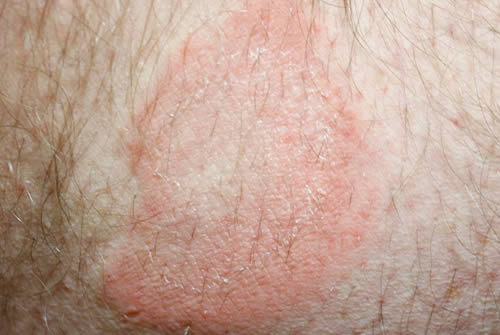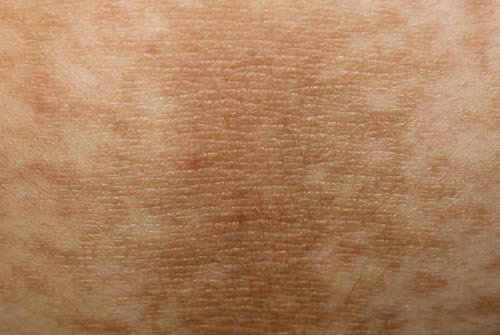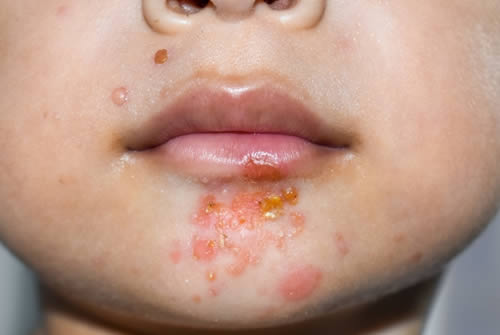
May 21, 2023 | Blog
Birthmarks are a common occurrence in newborns and are characterized by an overgrowth of skin pigment cells or blood vessels. While most birthmarks are benign, some may indicate an underlying medical condition. The exact cause of birthmarks is still unknown, although some factors may increase the likelihood of developing them, such as genetics and certain medical conditions.
There are two primary types of birthmarks: pigmented and vascular.
Pigmented Birthmarks:
Café-au-lait Spots: These spots are typically present at birth and are flat, light brown in color.
Mongolian Spots: These blue-gray patches of skin are typically found on the lower back or buttocks.
Moles: Moles are clusters of pigment cells and can vary in color, size, and shape.
Vascular Birthmarks:
Port-wine Stains: These red or purple birthmarks are caused by abnormal blood vessel growth.
Strawberry Hemangiomas: These raised, red birthmarks usually appear within the first few weeks of life.
Salmon Patches: These pink birthmarks are typically flat and can be found on the forehead, eyelids, or neck.
Treatment options for birthmarks depend on the type and severity of the birthmark. While most birthmarks do not require treatment and will fade over time, some may cause discomfort or be a sign of an underlying medical condition. Here are some common treatments for birthmarks:
Laser Therapy: This treatment uses lasers to target and destroy the blood vessels or pigment cells in the birthmark.
Surgery: In some cases, surgical removal may be necessary.
Medications: Certain medications can help to shrink or reduce the appearance of birthmarks.
It is important to consult with a dermatologist if you have concerns about a birthmark. Although most birthmarks are harmless, some may require treatment if they are causing discomfort or indicate an underlying medical condition. Dr. Neily, a board-certified dermatologist in Venice, Florida can provide expert guidance and care. Contact us today to schedule an appointment.

May 27, 2023 | Blog
Pregnancy is a time of joy and excitement for women, but it also brings about changes in the skin. Due to hormonal fluctuations, various skin conditions can arise during pregnancy that can be uncomfortable, painful, and irritating. Luckily, there are treatments available to alleviate these conditions, and a dermatologist can help with the process. Let’s take a look at some of the most common skin conditions during pregnancy and the recommended dermatology treatments for each.
Melasma:
Melasma is a skin condition that frequently occurs during pregnancy due to hormonal changes. Dark patches appear on the face, especially on the cheeks, nose, forehead, and upper lip. To treat melasma, dermatologists usually suggest topical creams containing hydroquinone, corticosteroids, or tretinoin. Other options include microdermabrasion, chemical peels, and laser therapy, which can reduce the visibility of dark spots.
Acne:
Hormonal changes during pregnancy can worsen acne. Dermatologists may suggest benzoyl peroxide or salicylic acid for topical treatment. Depending on the acne’s severity, other medications such as oral antibiotics or other prescription medicines may be prescribed.
Pruritic Urticarial Papules and Plaques of Pregnancy (PUPPP):
PUPPP is a common skin condition that appears during the third trimester of pregnancy. It creates red, itchy, and raised bumps on the skin, particularly on the thighs, abdomen, and buttocks. Antihistamines and topical steroids can help relieve PUPPP-related itching.
Papular Eruptions of Pregnancy:
Papular Eruptions of Pregnancy (PEP) is another common skin condition that occurs during pregnancy. It causes itchy red bumps to appear on the skin, usually on the arms, legs, and abdomen. Topical steroids, oral antihistamines, or UV light therapy are typical treatments for PEP.
Pemphigoid Gestationis:
Pemphigoid Gestationis (PG) is an autoimmune disorder that is rare but can develop during pregnancy. The skin develops itchy, blistering lesions that typically begin around the belly button and can spread to other areas of the body. Treatment involves the use of topical and/or oral steroids to reduce inflammation and suppress the immune system.
Intrahepatic Cholestasis:
Intrahepatic Cholestasis of Pregnancy (ICP) is a liver disorder that occurs during pregnancy. It causes intense itching on the hands and feet and can be associated with jaundice. Doctors generally prescribe medications to relieve itching and monitor liver function. Delivery may also be suggested, as the condition can worsen in the later stages of pregnancy.
If you’re suffering from any of these skin conditions during pregnancy, it’s essential to consult with a dermatologist. Dr. Neily in Venice, Florida is available to diagnose the condition and recommend the best treatment options to ensure the health of both you and your baby. Contact us today!

Jun 7, 2023 | Blog
Granulomas refer to small areas of inflammation that develop in response to irritants, infections, or foreign substances in various tissues of the body. These clusters of immune cells, such as macrophages, gather together to contain the irritant. In this article, we’ll take a closer look at the symptoms, causes, types, and treatments of granulomas.
Causes of Granulomas
Several factors can lead to the formation of granulomas, including infections, inflammation, autoimmune diseases, and exposure to foreign substances. Some of the most common causes of granulomas include:
- Infections such as tuberculosis, fungal infections, and leprosy
- Autoimmune diseases such as Crohn’s disease and sarcoidosis
- Exposure to foreign substances such as talcum powder or silicone
- Chronic inflammation due to conditions such as rheumatoid arthritis or inflammatory bowel disease
Symptoms of Granulomas
The symptoms of granulomas may vary depending on the location and cause of the granuloma. In some cases, they may not cause any symptoms at all. However, common symptoms of granulomas include:
- Bumps or lesions on the skin
- Fatigue
- Coughing
- Shortness of breath
- Joint pain or stiffness
- Weight loss
- Abdominal pain or discomfort
Types of Granulomas
There are several types of granulomas, which include:
- Tuberculoid granulomas: Caused by tuberculosis or other mycobacterial infections and characterized by a central area of caseation necrosis surrounded by immune cells.
- Foreign body granulomas: Develop in response to foreign substances that cannot be broken down by the body, such as talcum powder or silicone.
- Sarcoid granulomas: Characteristic of sarcoidosis, an autoimmune disease where immune cells cluster together in organs like the lungs, lymph nodes, and other areas.
- Granulomatous vasculitis: An inflammatory condition that affects blood vessels, leading to the formation of granulomas around vessel walls.
Treatments for Granulomas
The treatment of granulomas depends on the underlying cause and severity of symptoms. Treatment options include:
- Antibiotics or antifungal medication for infections
- Steroids or immunosuppressive medication for autoimmune diseases
- Surgical removal of foreign bodies
- Injections of corticosteroids into the affected area to reduce inflammation and promote healing
In some cases, granulomas may not require treatment and may go away on their own. If you have symptoms of a granuloma, it is important to seek medical attention to determine the underlying cause and appropriate treatment plan. Call our Venice office and schedule an appointment with Dr. Neily today!

Jun 14, 2023 | Blog
Acanthosis nigricans is a skin condition characterized by the presence of dark, velvety patches on the skin, typically found on the neck, armpits, groin, and other skin folds. The patches may also appear on the hands, elbows, knees, or face. The affected skin is often thick, rough, and itchy. This condition affects both men and women of any age, although it is more prevalent in those who are overweight, have insulin resistance or type 2 diabetes.
The main cause of acanthosis nigricans is an increase in insulin levels. High insulin levels can stimulate skin cell growth and trigger melanin production. Obesity, insulin resistance, type 2 diabetes, hormonal disorders such as polycystic ovary syndrome, or certain medications can contribute to the increase in insulin levels that cause acanthosis nigricans.
The symptoms of acanthosis nigricans include the presence of dark, thick, velvety patches of skin on the neck, armpits, groin, and other skin folds. The skin may feel rough and itchy, and in some cases, may emit a foul odor.
There are different types of acanthosis nigricans, including type 1, which occurs in people with insulin resistance, usually due to obesity or type 2 diabetes, type 2, which occurs in people who do not have insulin resistance or diabetes but have a genetic predisposition to the condition, and drug-induced, which occurs as a side effect of certain medications.
While there is no specific cure for acanthosis nigricans, treatment options are available. Treating the underlying cause, such as losing weight and improving blood sugar control for people with insulin resistance or type 2 diabetes, can help improve the condition. Medications or topical treatments may be prescribed to help reduce the appearance of the patches. Dermabrasion, laser therapy, and chemical peels are also used to improve the appearance of affected skin.
Preventing the development of acanthosis nigricans includes maintaining a healthy weight, exercising regularly, and eating a healthy diet. Managing any underlying medical conditions, such as diabetes or hormonal disorders, can also help prevent the condition. If you notice any changes in your skin, especially in the skin folds, consult with Dr. Neily at Coast Dermatology for an early diagnosis and treatment to prevent the condition from getting worse.

Jun 21, 2023 | Blog
Impetigo is a bacterial skin infection that is contagious and commonly affects children, but it can occur at any age. This infection can spread easily among children in close contact, such as in schools and daycare centers. If you suspect that you or your child has impetigo, it is essential to seek medical attention from a dermatologist who can diagnose and treat the condition.
The symptoms of impetigo are red sores or blisters that appear on the face, neck, hands, and other areas of the body. The sores may burst and develop yellow-colored crusts that can be itchy and uncomfortable. Impetigo can also cause swollen lymph nodes, particularly in the affected area. In severe cases, impetigo can cause fever and chills.
Antibiotics are the most common treatment for impetigo, either applied topically or taken orally. The type of antibiotic prescribed will depend on the severity of the infection and other factors. Completing the full course of antibiotics is crucial, even if the symptoms improve or disappear, to prevent the infection from recurring.
Aside from the treatments mentioned above, it is important to take measures to prevent the spread of impetigo. Here are some tips to remember:
- Keep the affected areas clean: Clean the affected areas with soap and water regularly. This can help remove the crusts and prevent the bacteria from spreading.
- Avoid touching the affected areas: Try to avoid touching the affected areas as much as possible. If you do touch them, make sure to wash your hands thoroughly with soap and water.
- Cover the affected areas: Cover the affected areas with a clean, dry bandage or gauze to prevent the spread of the bacteria to other parts of your body or to other people.
- Don’t share personal items: Avoid sharing personal items such as towels, clothing, or bedding with others, as this can spread the bacteria.
- Practice good hygiene: Good hygiene habits, such as washing your hands regularly, can help prevent the spread of impetigo and other infections.
If you suspect that you or someone in your family has impetigo, it is important to seek medical attention as soon as possible. A dermatologist can help diagnose and treat impetigo, as well as provide guidance on how to prevent its spread. With prompt and effective treatment, most cases of impetigo can be resolved within a few weeks. Make an appointment with Dr. Neily Board Certified dermatologist today.





